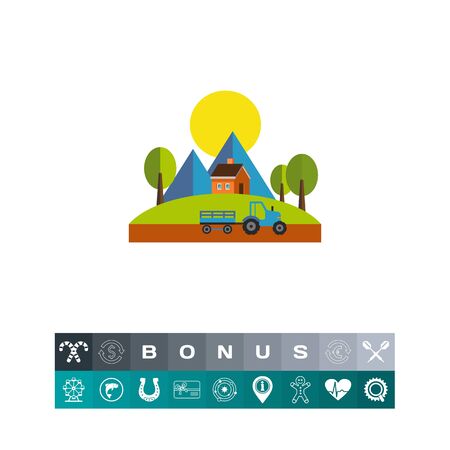1. Understanding the Life Cycle of Camping Gear
When youre looking to evaluate the environmental impact of your camping gear, it helps to start by understanding its full life cycle. Every piece of gear—from your tent and sleeping bag to your portable stove—goes through several stages that affect the environment in different ways. By breaking down these stages, you can pinpoint where the biggest impacts happen and make smarter choices.
What Is a Product Life Cycle?
A product life cycle is the journey an item takes from raw materials all the way to disposal. For camping gear, this means everything from how the materials are sourced, how its made, how long it lasts, and what happens when youre done using it.
Main Stages of Camping Gear Life Cycle
| Stage | Description | Environmental Impact |
|---|---|---|
| Raw Materials | Extracting resources like aluminum, nylon, or polyester used to make gear | High energy use, habitat destruction, pollution |
| Manufacturing | Turning raw materials into finished products in factories | Water usage, chemical waste, carbon emissions |
| Transportation | Shipping products from factories to stores or homes | Fuel consumption, greenhouse gas emissions |
| Usage | The time you spend using your gear on trips | Relatively low if cared for properly; improper use can cause damage and waste |
| End of Life | What happens when youre done with the gear—trash, recycle, or donate | Landfill space, microplastic pollution if not recycled properly |
Why This Matters for Campers
Understanding where the biggest environmental impacts occur helps you make better decisions. For example, choosing gear made from recycled materials or supporting brands with cleaner manufacturing processes can reduce harm at the early stages. Taking good care of your equipment extends its life and reduces waste. And knowing how to dispose of old items responsibly keeps them out of landfills.
Quick Tip:
If a product doesn’t list where it’s made or what materials it uses, that might be a red flag. Look for transparency from brands that openly share their sustainability efforts.
This knowledge gives you more control over your footprint while enjoying nature—and that’s something every responsible camper can feel good about.
2. Material Matters: Choosing Sustainable Components
When youre evaluating the environmental impact of your camping gear, one of the first things to look at is what its made from. The materials used in tents, backpacks, cookware, and other essentials can tell you a lot about how eco-friendly your gear really is. Choosing products made with sustainable components not only reduces your carbon footprint but also supports companies that are making an effort to protect our planet.
What Makes a Material Sustainable?
Sustainable materials are those that have a lower impact on the environment during their production, use, and disposal. This includes:
- Recycled fabrics: Often made from post-consumer plastics like water bottles or fishing nets. These reduce waste and limit the need for virgin resources.
- Biodegradable materials: Break down naturally over time without harming ecosystems. Great for packaging or items like utensils and wipes.
- Responsibly sourced metals: Aluminum or stainless steel that’s been mined or recycled with minimal environmental damage and fair labor practices.
Common Camping Gear Materials at a Glance
The table below breaks down some common gear materials and their sustainability features:
| Gear Type | Sustainable Material | Sustainability Benefit |
|---|---|---|
| Tents | Recycled polyester (rPET) | Reduces plastic waste; uses less energy than virgin polyester |
| Backpacks | Nylon made from reclaimed ocean plastics | Cleans up oceans; lowers oil consumption |
| Cookware | Recycled aluminum or stainless steel | Lower carbon footprint; long-lasting durability |
| Campsite utensils | Bamboo or biodegradable bioplastics | No toxic residue; compostable options available |
How to Check What Your Gear Is Made Of
You don’t need to be a scientist to figure out if your camping gear is eco-friendly—just pay attention to product labels, certifications, and brand transparency. Look for terms like “recycled content,” “bluesign® approved,” “Fair Trade Certified™,” or “FSC-certified” wood. Many outdoor brands now include this info right on their tags or websites.
A Few Quick Tips:
- If it doesn’t say where the material comes from, it probably isn’t sustainable.
- Avoid PVC and other toxic plastics—they’re hard to recycle and can leach chemicals.
- The more durable a product is, the longer it stays out of the landfill—so quality matters too!
Selecting camping gear made from thoughtful materials is a great step toward reducing your environmental impact on every adventure. It’s all about making smarter choices that still hold up in the wild.

3. Durability and Repairability
When youre choosing camping gear, its easy to focus on features like weight, style, or price. But if you want to reduce your environmental impact, durability and repairability are key factors to consider. Gear that lasts longer and can be fixed instead of tossed helps keep waste out of landfills and reduces the need for constant manufacturing—which takes a toll on natural resources.
Why Durability Matters
Durable gear means fewer replacements over time. That translates into less raw material extraction, lower energy use during production, and less transportation-related emissions. For example, a high-quality tent that lasts 10 years is far better for the environment than buying a cheap one every couple of seasons.
Signs of Durable Gear
Look for these indicators when shopping:
| Feature | What to Look For |
|---|---|
| Material Quality | Heavy-duty fabrics like ripstop nylon or canvas; reinforced stitching |
| Zippers and Fasteners | YKK zippers, metal buckles instead of plastic |
| User Reviews | Consistent reports of long-term reliability from other campers |
| Brand Reputation | Companies known for producing rugged, long-lasting outdoor gear (e.g., Patagonia, REI Co-op) |
The Value of Repair-Friendly Design
Gear thats easy to repair extends its lifespan even further. Some brands design their products with replaceable parts or offer repair kits and services. This not only saves you money but also keeps usable items out of the trash.
How to Spot Repair-Friendly Gear
- Modular components (e.g., removable poles, replaceable buckles)
- Straightforward construction that allows DIY fixes
- Availability of spare parts from the manufacturer
- Brands offering lifetime warranties or repair programs (like Arcteryx or The North Face)
Quick Tip:
If you’re unsure whether a product is built for durability and repair, check if the company offers detailed product care guides or has a visible commitment to sustainability on their website.
By focusing on gear that’s both tough and fixable, you’re not just making a smart investment—you’re also helping protect the wild places you love to explore.
4. Eco-Certifications and Standards to Look For
When youre choosing camping gear with the environment in mind, looking for reliable eco-certifications can help you make better choices. These certifications show that a product meets certain environmental or ethical standards. Here are some of the most trusted certifications to keep an eye out for when shopping for sustainable outdoor gear.
bluesign®
The bluesign® system focuses on sustainable textile production. It ensures that harmful chemicals are eliminated from the beginning of the manufacturing process and that resources like water and energy are used responsibly. If your tent, sleeping bag, or clothing is bluesign® certified, it means its made with safer processes for both workers and the planet.
Fair Trade Certified™
Fair Trade Certification is all about ethical labor practices. It ensures that workers receive fair wages and work in safe conditions. Some camping apparel and gear brands offer Fair Trade Certified products, meaning you’re supporting better livelihoods around the globe while enjoying your outdoor adventures.
USDA Organic
If you’re buying organic cotton clothing or reusable food wraps for your camping trips, look for the USDA Organic label. This certification means the materials were grown without synthetic pesticides or fertilizers, making them healthier for you and the environment.
Common Eco-Certifications at a Glance
| Certification | What It Covers | Applies To |
|---|---|---|
| bluesign® | Sustainable textile manufacturing, chemical safety, resource efficiency | Clothing, backpacks, tents, sleeping bags |
| Fair Trade Certified™ | Ethical labor practices, fair wages, safe working conditions | Clothing, accessories, some gear items |
| USDA Organic | No synthetic pesticides or fertilizers used in growing materials | Cotton apparel, food wraps, towels |
Why These Certifications Matter
Choosing certified products not only helps reduce your environmental footprint but also supports companies that prioritize people and the planet. While eco-certified gear might cost a bit more upfront, its often higher quality and longer-lasting—saving you money (and waste) over time.
Tip:
Before buying new gear, check the brand’s website or product tags for these certifications. Some companies even have dedicated sustainability sections explaining their environmental efforts in detail.
By learning to recognize trustworthy eco-labels, you’ll be able to make smarter decisions that align with your love for nature—and help protect it for future campers.
5. Evaluating Brand Sustainability Practices
When choosing camping gear, its not just about the product itself — its also about the company behind it. A brand’s overall sustainability practices can tell you a lot about the true environmental impact of the gear you’re buying. Here are some key areas to consider when evaluating outdoor brands:
Transparency in Operations
Look for brands that openly share information about how their products are made, where materials are sourced, and what steps they take to reduce environmental harm. Transparency shows a commitment to accountability and allows consumers to make informed choices.
Carbon Offset Initiatives
Some companies invest in carbon offset programs to balance out the emissions created during production and shipping. This could include funding reforestation projects or renewable energy efforts. Supporting these brands helps reduce your camping gear’s overall carbon footprint.
Ethical Labor Policies
Sustainability isn’t just about the environment — it includes how workers are treated too. Check if the brand follows fair labor practices, ensures safe working conditions, and pays fair wages throughout their supply chain.
Take-Back and Recycling Programs
A growing number of outdoor gear companies offer take-back programs where you can return used items for recycling or refurbishment. This helps extend the life of gear and keeps waste out of landfills.
Quick Comparison: What to Look For in a Sustainable Brand
| Sustainability Practice | What It Means | Why It Matters |
|---|---|---|
| Transparency | Open info on sourcing & manufacturing | Makes it easier to verify eco-friendly claims |
| Carbon Offsetting | Invests in projects that reduce CO₂ emissions | Lowers the climate impact of your gear |
| Ethical Labor | Treats workers fairly across supply chains | Adds social responsibility to sustainability |
| Gear Take-Back Programs | You can return old gear for recycling or reuse | Cuts down on landfill waste and promotes reuse |
The next time youre shopping for new camping gear, take a few minutes to research the brand’s environmental policies. Supporting companies with strong sustainability commitments helps ensure your outdoor adventures have a lighter footprint on the planet.


